What’s inside the Bulky issue?
The Summer 2016 “Bulky” issue is busy making its way to various destinations around the world. Whether you’re a subscriber waiting for your copy to arrive, or you’ve been thinking of subscribing and you’d like a preview before you buy, today’s post is here to give you a sneak peek inside the issue!
—————————————————————————————————
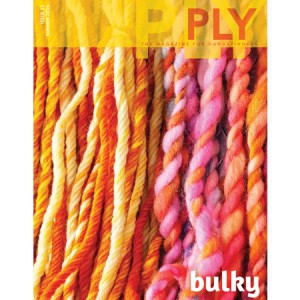 We hear from a lot of spinners that you started out spinning bulky by default – so many of us did, because that was the easiest thing to spin! Eventually, many of us go on to try to mimic commercial yarns, or to spin a fine lace-weight, and we leave our lumpy, bumpy, bulky experiments in the past. If you’ve been living under the assumption that now that you’ve learned to spin finer yarns, you can’t go back to bulky – we’re here to dispel that myth. Let’s get inspired to spin some bulky yarns! Here’s a peek into our issue devoted to these bulky beauties…
We hear from a lot of spinners that you started out spinning bulky by default – so many of us did, because that was the easiest thing to spin! Eventually, many of us go on to try to mimic commercial yarns, or to spin a fine lace-weight, and we leave our lumpy, bumpy, bulky experiments in the past. If you’ve been living under the assumption that now that you’ve learned to spin finer yarns, you can’t go back to bulky – we’re here to dispel that myth. Let’s get inspired to spin some bulky yarns! Here’s a peek into our issue devoted to these bulky beauties…
Great Articles!
We’ve rounded up the a talented group of spinners and asked them to share their insights and experiments with us, and as always we’ve got a tip jar full of helpful hints from our readers, new information on the spinning SCENE, and how to keep your spinning body happy by Carson Demers! Take a look at what you’ll get:
- Bulky, by Stephenie Gaustad – Stephenie gives an introduction to this big, beautiful yarn.
- Making the Leap Back to Bulky, by Vickie Hauff – If you went lace and never looked back, join Vickie on an exploration of her spinning roots, and a return to spinning thicker yarns.
- Big Crimpin’: Sneaky, Surprising Cormo, by Beth Smith – In this month’s breed study, Beth takes us through the buttery soft crimp of Cormo.
- The Long and Short of Bulky Yarns, by Deb Robson – Deb explains how fiber length makes a big impact on the ability of a bulky yarn to hold up to wear and tear over time.
- Drafting Thicker, by Jacey Boggs Faulkner – If you’ve been drafting out fine yarns, it will be a challenge to start drafting thicker amounts. In this article Jacey walks you through the process to help you spin a bulky yarn.
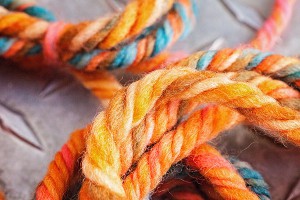
- The Truth about Take-Up, by Michelle Boyd – Adding more take-up to your wheel (tightening the tension) is a generally accepted way of drafting a bulkier yarn – if the fibers feed into the orifice faster, you’re more likely to get a bulkier bundle in there, right? Well, only to a point. Michelle explains the details for you in her article, including a discussion of different wheel types and how take-up affects the grist of your yarn.
- Behind the Curtain: SpinOlution, by Ashley Martineau – The SpinOlution wheels are friends to bulky spinners, mainly due to that open orifice and the big bobbins. Ashley takes you on a sneak-peek tour of the SpinOlution company, including an interview with Mike Pauly, the owner.
- Prep It! Pre-Drafting with a Diz, by Sylvia Becker – If you have problems drafting properly for a bulky, worsted single, then this article is for you! Sylvia explains how she uses a horn diz in her prep stages to get the yarn she’s after.
- Spin It! Bulky Singles, by Kim McKenna – Kim walks you through fiber choices, prep, spinning, and finishing to create a smooth, bulky singles yarn.
- Spin It! Thick and Thin, by Jacey Boggs Faulkner – We’re going back to (most of) our roots and spinning a thick and thin yarn – but this time, with intention rather than just beginner’s fumblings. This art yarn creates a contrast in texture and is gorgeous on its own or knitted into a project.
- Spin Thick vs. Ply Up, by James Perry – There are two very simple ways to get a bulky yarn: spin thick singles in the first place, or ply several finer singles together. In this article, James takes us through the differences and the resulting yarns and swatches they create.
- Fat Color, by Jillian Moreno – Have you ever noticed how spinning a bulky yarn seems to make the fiber colors lighter than spinning a thinner yarn from the same fiber? Jillian explains how light, twist, and the surface texture of the yarn affect the overall color of the finished project, with plenty of colorful examples.
- Spin It! Lightweight Bulky, by Esther Rodgers – If you’re not overly enthusiastic about the idea of spinning up some heavy yarns just in time for the heat of summer, worry no more! Esther shows you how to reduce the weight of a yarn and still give it bulk.
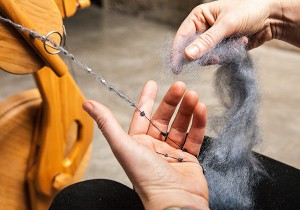
- Build! Get Bulky from Your Comfort Zone, by Sylvia Becker – Start in your comfort zone and spin a fine single – and then several more. In this article, Sylvia will show you how to build a Lazy Kate that will hold 8 bobbins or use separate Lazy Kates to combine several bobbins full of singles at one time. She also includes the use of a home-made heck to keep those singles tamed.
- Spin It! Bulky, by Bren Boone – Bren shows you how to develop the muscle memory needed to teach your hands to spin bulky yarns.
- The Bulkiest Yarn, by Esther Rodgers – In 2011, Lexi Boeger actually spun a bulky yarn using a cement mixer instead of a spinning wheel. In this interview article, Esther gets her to tell the story.
- Spin It! Lumberjack Yarn, by Amy Tyler – In a twist on the classic cable yarn, Amy explains how she uses a lower twist in the original singles to make a “lumberjack” cable yarn that is soft and elastic.
- Bulky Yarns for Knitting Sketches, by Stephenie Gaustad – In this illustrated article, Stephenie talks about how great it can be to use bulky yarns for a knitting design, because the work goes quickly so you can see the results of your labor sooner.
- Spin It! Monster Satchel Yarns, by Christopher Kale – Christopher uses his sample yarns and puts them to good work! In this article he explains how to spin them, whether for a practical reason or just-because.
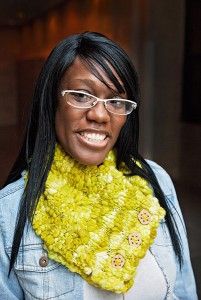 Fantastic Projects
Fantastic Projects
In every issue of PLY, you’ll find a handful of projects for knitting, weaving, crocheting and more – along with instructions for how to best spin the yarns you’ll use in those projects. Here are the projects from the Summer issue:
- Sodalite Cowl, by Kim McKenna – Even though this project was made with a singles yarn, the resulting stitches don’t skew, thanks to the finishing technique described in Kim’s other article.
- Coincide Cowl, by Brittany Wilson – A fabulous and fashionable accessory, perfect for using those thick and thin singles!
- Shappo Hat, by Julia Farwell-Clay – Featuring a cabled sideways brim and a lace stitch pattern, this bulky hat is a fast and fun knit.
- Monster Satchel, by Christopher Kale – Put those sample-sized yarns to good use in this monster of an accessory!
Everything Else!
Tip Jar will help you spin a bulky yarn with consistent diameter. In Ergo Neo, Carson explains that your body actually tenses up when you step outside your spinning default, so he shows us ways to counteract that problem. In Guilded! we meet the spinners of the Etobicoke Handweavers and Spinners Guild and learn about their 50-mile coat project. Scene is full of things on the spinning scene that you’ll want to know about including a Guatemalan weaving tour and a great new Craftsy class. Beth Smith offers a variety of pattern suggestions to get you to Use Your Yarn, maximizing the smaller yardage and bigger weight. And finally, if you missed the PLY Away retreat this year, we’ve got a round-up for you in this issue!
If you haven’t subscribed yet, you can do that right here on our website! And be sure to pick up a copy of this issue if you don’t already have one (or it isn’t on its way to you)!

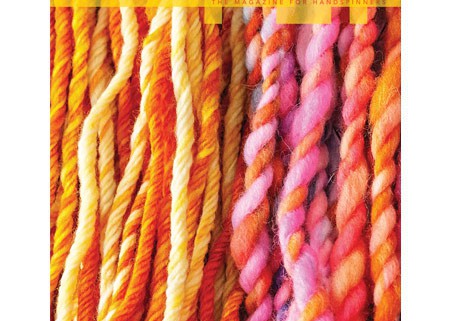
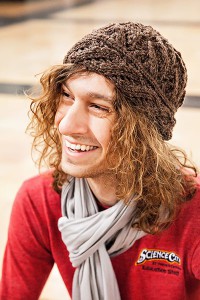
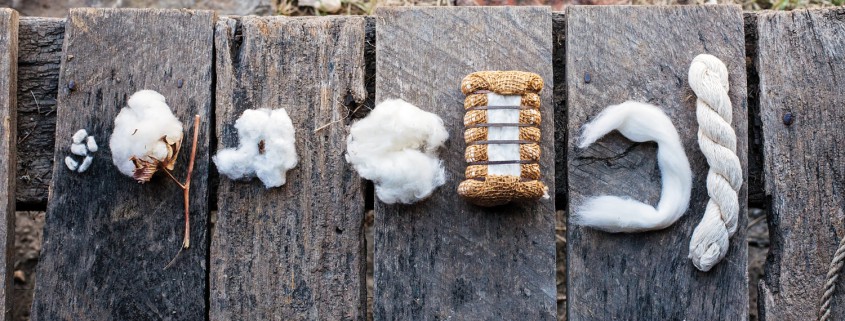
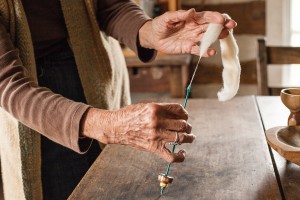
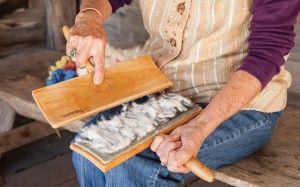 We love hearing what the spinners of the world think about each issue! It also helps us entice new readers to pick up a copy of PLY. So we’d really love it if you would
We love hearing what the spinners of the world think about each issue! It also helps us entice new readers to pick up a copy of PLY. So we’d really love it if you would 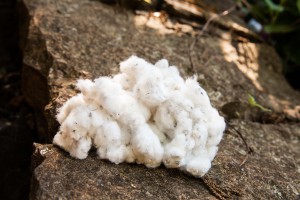
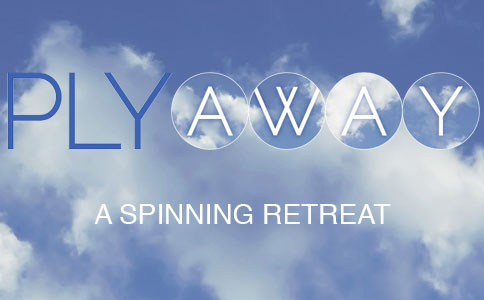
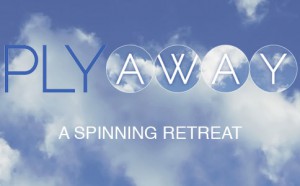

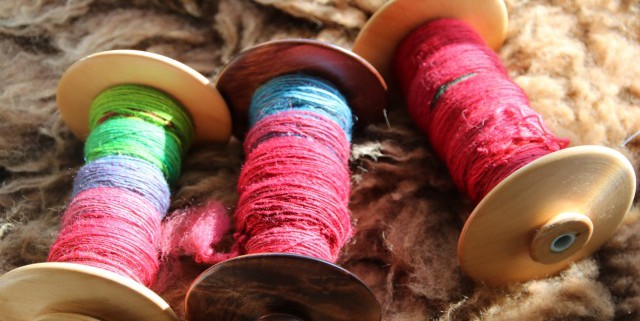
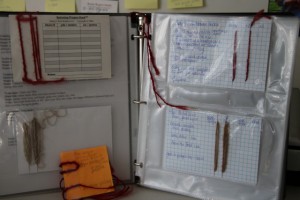 See that little orange sticky note? I’m not sure if you can read it, but it says, “I no longer remember what this is or how it was prepped.” Infinitely useless information, I’m sure, but it’s going in the book. I know this was spun in 2016, and I know its 100% wool of some breed or other. This little sticky note told me that not only do I need to keep more specific records of my work, but that that each sample was spun using a different pulley on my wheel. This makes that note worth saving. My goal for this binder, aside from keeping records of what I have done in the past, is to use it to get inspiration and specific information on fiber prep, drafting, and wheel set-up so I can make better plans for future projects.
See that little orange sticky note? I’m not sure if you can read it, but it says, “I no longer remember what this is or how it was prepped.” Infinitely useless information, I’m sure, but it’s going in the book. I know this was spun in 2016, and I know its 100% wool of some breed or other. This little sticky note told me that not only do I need to keep more specific records of my work, but that that each sample was spun using a different pulley on my wheel. This makes that note worth saving. My goal for this binder, aside from keeping records of what I have done in the past, is to use it to get inspiration and specific information on fiber prep, drafting, and wheel set-up so I can make better plans for future projects.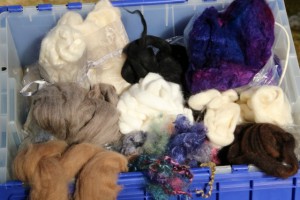 I found a bobbin in a box somewhere with a few yards of camel singles on it from the camel top in the stash bin. They were really, really crappy singles. So I threw that bobbin on the wheel and finished spinning an ounce of camel down using a medium pulley and supported long draw. The single that resulted was certainly acceptable. It’s not great, but it isn’t nearly as bad as my first attempt. I have two more ounces to go, and the next ounce I’m going to try spinning it from the fold, just to see what happens. The third ounce is waiting for inspiration to strike.
I found a bobbin in a box somewhere with a few yards of camel singles on it from the camel top in the stash bin. They were really, really crappy singles. So I threw that bobbin on the wheel and finished spinning an ounce of camel down using a medium pulley and supported long draw. The single that resulted was certainly acceptable. It’s not great, but it isn’t nearly as bad as my first attempt. I have two more ounces to go, and the next ounce I’m going to try spinning it from the fold, just to see what happens. The third ounce is waiting for inspiration to strike.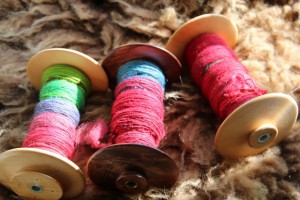 Next up was a beautiful braid of BFL roving dyed in red, greens and blues. To me it looked like a pair of socks fit for a Christmas elf just waiting to be made. I divided the roving lengthwise into six strips and spun a fine worsted single using two strips for each bobbin to make a 3-ply sock yarn. I am hoping the colors will mostly line up, but if they don’t I am not going to lose any sleep over it. The socks will be the first made from my handspun, which will make them special by definition. I don’t care if they suck. They will be the record of my effort and, if they turn out really bad, I know that eventually I will be able to make a better pair.
Next up was a beautiful braid of BFL roving dyed in red, greens and blues. To me it looked like a pair of socks fit for a Christmas elf just waiting to be made. I divided the roving lengthwise into six strips and spun a fine worsted single using two strips for each bobbin to make a 3-ply sock yarn. I am hoping the colors will mostly line up, but if they don’t I am not going to lose any sleep over it. The socks will be the first made from my handspun, which will make them special by definition. I don’t care if they suck. They will be the record of my effort and, if they turn out really bad, I know that eventually I will be able to make a better pair.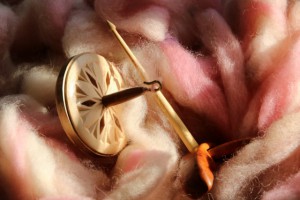 After the socks, I plan on tackling an alpaca blend with one of my spindles; a project which was started years ago. Now THAT is some really sucky yarn… for now.
After the socks, I plan on tackling an alpaca blend with one of my spindles; a project which was started years ago. Now THAT is some really sucky yarn… for now.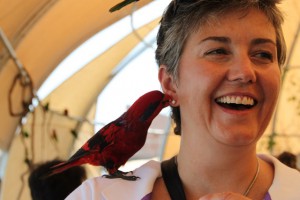
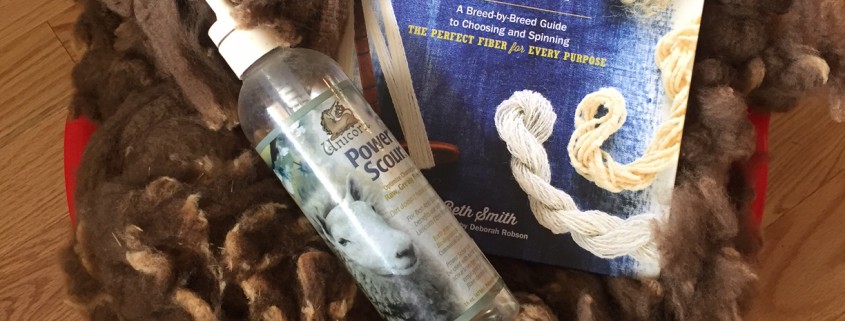
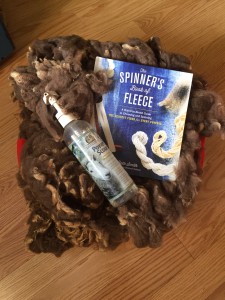 You all knew I’d fall. Now I’m trying not to fall too hard too fast. I decided to process the portion of Bond fleece I have. I think it’s about two pounds.
You all knew I’d fall. Now I’m trying not to fall too hard too fast. I decided to process the portion of Bond fleece I have. I think it’s about two pounds.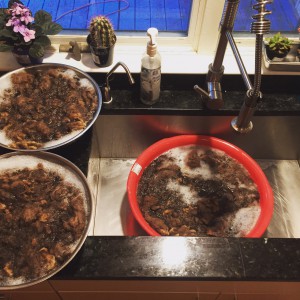
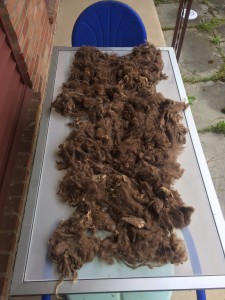 My fleece is drying outside on a big screen held up by two chairs. It’s been there for about 4 hours and it’s almost dry. I’m leaving it out until just before sunset. It’s a humid day and I want that sucker to be bone dry before I bring it in the house.
My fleece is drying outside on a big screen held up by two chairs. It’s been there for about 4 hours and it’s almost dry. I’m leaving it out until just before sunset. It’s a humid day and I want that sucker to be bone dry before I bring it in the house.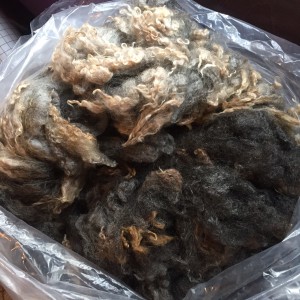
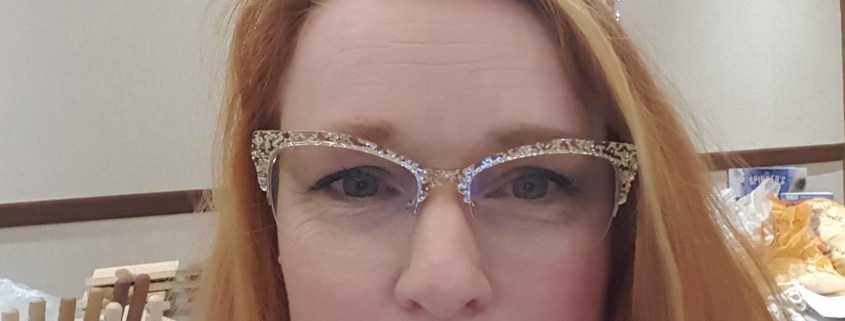
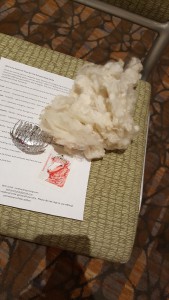
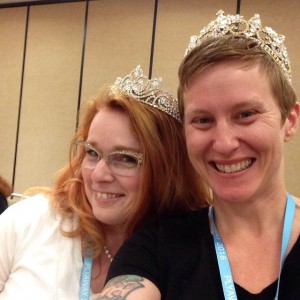 over 2 days. So there was a lovely little temporary tattoo and a tiny tiara for each participant. I also wore a tiara during the class.
over 2 days. So there was a lovely little temporary tattoo and a tiny tiara for each participant. I also wore a tiara during the class. which we visited every day. I may have bought a couple of things.
which we visited every day. I may have bought a couple of things.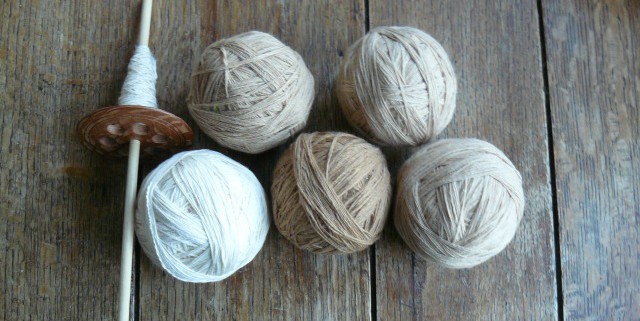
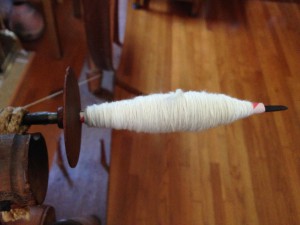
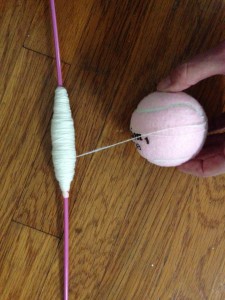
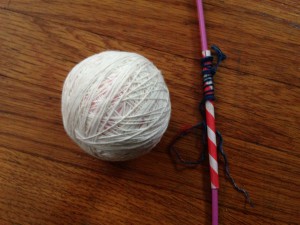
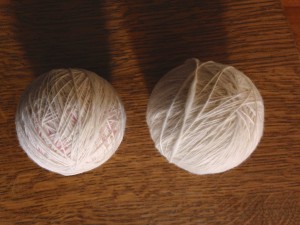
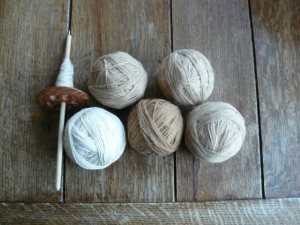
 Susan Hector is an anthropology professor at a local community college, and a consulting archaeologist for an environmental studies company. She and her husband spin in Old Town San Diego State Historic Park in period attire, as part of the park’s Fiber Arts Guild, which is a living history program. She has been spinning and weaving for over 30 years and can be found at
Susan Hector is an anthropology professor at a local community college, and a consulting archaeologist for an environmental studies company. She and her husband spin in Old Town San Diego State Historic Park in period attire, as part of the park’s Fiber Arts Guild, which is a living history program. She has been spinning and weaving for over 30 years and can be found at 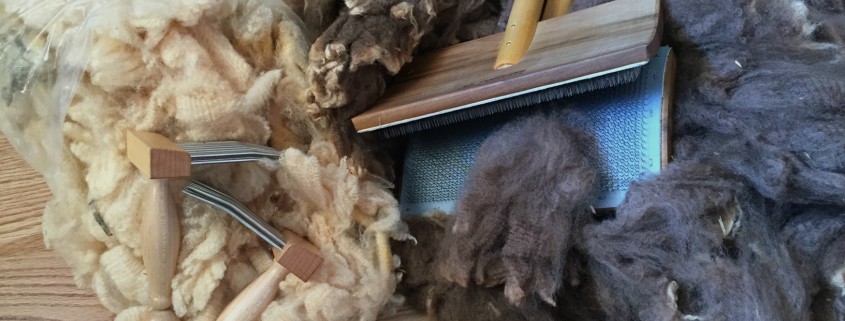
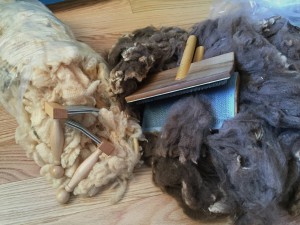 Earlier this week I woke up wanting to process raw fleece. It’s not what I usually do, it’s not what I’m drawn to spinning-wise. I’m a commercially prepped, gorgeously hand dyed fiber kind of spinner. But lately I’ve been thinking about fleece.
Earlier this week I woke up wanting to process raw fleece. It’s not what I usually do, it’s not what I’m drawn to spinning-wise. I’m a commercially prepped, gorgeously hand dyed fiber kind of spinner. But lately I’ve been thinking about fleece.